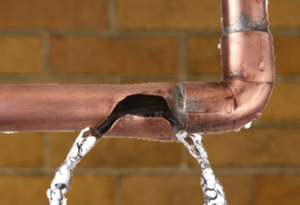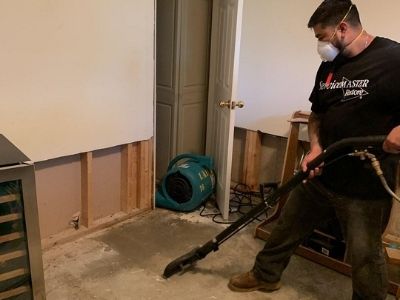Understanding the Signs of a Burst Pipe and also Rapid Repair Techniques
Understanding the Signs of a Burst Pipe and also Rapid Repair Techniques
Blog Article
The publisher is making several good pointers regarding How to Install and Connect a New Dishwasher in general in this great article in the next paragraphs.

A burst pipe is a significant emergency; you can only stand as you enjoy water you pay a lot to rejoin with the earth. In worse situations, you notice a swimming pool on your kitchen floor, which is an excellent trip risk, specifically if you have kids around. If the pipeline that burst remained in your walls, problem: you may need to paint that entire area.
How can a catastrophe like a ruptured pipe be protected against and managed? Well, by paying attention to your expert emergency plumbers and adhering to these rules.
Exactly how do I recognize when my pipes have burst?
Rising and fall water pressures
Pipes do not simply burst in a day. You may have discovered that your kitchen faucet or shower does not run instantly when you turn the faucet. It may stop briefly for a couple of secs and then blast you with more force than typical.
In other instances, the water may seem typical initially, after that decrease in stress after a couple of secs.
Damp walls and water stains
Before a pipe ruptureds, it will leak, a lot of times. If this relentless dripping goes undetected, the leak may graduate right into a large gash in your pipe. One easy way to avoid this emergency is to look out for wet walls ad water spots. These water spots will lead you right to the leakage.
Puddles under pipelines as well as sinks
When a pipeline ruptureds, the outflow develops a puddle. It may appear that the puddle is growing in size, and regardless of how many times you wipe the pool, in a few minutes, there's another one waiting to be cleaned. Frequently, you may not be able to map the pool to any type of noticeable pipes. This is a sign to call a professional plumber.
Untraceable dripping sounds
Pipeline ruptureds can occur in the most unpleasant places, like within concrete, inside wall surfaces, or under sinks. When your house goes quiet, you may have the ability to hear an annoyingly persistent trickling sound. Even after you've checked your shower head and also kitchen faucet, the trickling may proceed.
Beloved visitor, the dripping might be originating from a pipe inside your walls. There isn't much you can do regarding that, except tell a specialist plumber.
Turn off the Water
When water ices up, it increases in volume by regarding 9 percent. As well as it expands with significant pressure: The pressure inside pipelines might go from 40 pounds per square inch to 40,000 psi! No pipeline can hold that much pressure, so it breaks open. The break might occur where the ice kinds, however more often, it takes place where water stress finds a weak point in the pipeline. That may be inches or perhaps feet from the frozen location. Discover the water shutoff valve and turn off the water to stop even more damages. You might additionally need to shut off the electrical energy as well, depending upon where the leaks takes place and just how huge it is.
Contaminated water
Lots of people presume a burst pipeline is a one-way outlet. Rather the contrary. As water spurts of the hole or tear in your plumbing system, pollutants find their method.
Your water may be polluted from the resource, so if you can, check if your water storage tank has any issues. However, if your alcohol consumption water is supplied and also cleansed by the city government, you must call your plumber right away if you see or scent anything funny in your water.
What do I do when I detect a ruptured pipe?
Your water meter will certainly continue to run also while your water wastes. To minimize your losses, locate the main controls as well as turn the supply off. The water pipe are an above-ground structure beside your building.
How to Fix & Detect a Leaking Pipe
How Do I Know if a Pipe is Leaking?
Leak detection tests can help you determine if your pipe has a leak. Even if you don’t see an apparent leak, you should still conduct leak detection tests regularly to save water and money—and prevent major damage to your home.
Water meter. It can be helpful to figure out what your usual water meter usage numbers are and then monitor them regularly. To monitor your meter, first, turn off all water faucets in your home. Check the meter and write down the numbers. In a few hours, check the meter again. If the numbers have changed, you have a leak. Water gauge. Use a water gauge to test your water pressure. Your showerhead should produce a certain amount of water pressure based on its model and design. If the pressure is lower than it is supposed to be for that specific showerhead, your home likely has a leak. Puddles. Look inside your bathroom, laundry, and kitchen sink cabinets. Puddles around the cabinets or around toilets, tubs, showers, and washing machines indicate the presence of a leaking pipe. You may also notice loose tiles, peeling or flaking paint, or mold caused by water accumulation. Napkin test. Even if you don’t see any puddles, you may still have a leak. You can test for water leaks in the bathroom, laundry, and kitchen by wiping below-sink connections with a napkin, paper towel, or piece of toilet paper. If it becomes damp, you probably have a leaking pipe under the sink. Discolored walls. Walls that are discolored—usually with brown or yellow stains—or bulging might mean that they have been impacted by water damage caused by a leaking pipe. Smell. A leaky pipe will create sitting water, and over time, that water may develop a musty smell. If your home smells musty, but you can’t locate the source, it may be due to a leak. Steps for Fixing a Leaking Pipe
A leaky drain can be remedied by tightening the pipe base, replacing the drain seal, caulking the rim, and tightening the pipe nut. Similarly, a leaking toilet pipe can be treated by tightening the packing nut. You may also need to replace the valve. A leaky faucet may just need tightening or replacement of the washers. If that doesn’t work, consider replacing your faucet. If your pipe has a hole in it, you may want to use a pipe leak sealer or pipe leak tape. This quick fix for water pipe leaks can also temporarily fix a copper pipe leak. https://www.ahs.com/home-matters/quick-tips/how-to-tell-if-pipes-are-leaking/

As an enthusiastic person who reads on How to install a dishwasher safely, I was thinking sharing that excerpt was sensible. Make sure you take the opportunity to share this entry if you liked it. I enjoy reading our article about How to Install and Connect a New Dishwasher.
Book Service
Report this page